There is currently a lot going on in African countries. Most of them are building new ties with emerging markets, alliances that are believed will be critical in the coming years against a backdrop of China-US trade tensions and growing policy uncertainty in the United Kingdom owing to Brexit.
In recent decades, India, China, UAE, and Russia have emerged as strong trading and investment partners that are trying to shape the future of Africa’s economy. Additionally, the continent is well-known for having a wealth of natural resources, some states even having the potential to be the wealthiest countries on earth.
Africa has abundant fertile soil, raw materials, and precious stones like Botswana.
However, for most travelers to the continent, there are always two major concerns lingering in their minds – which is the safest country and which offers the best stay.
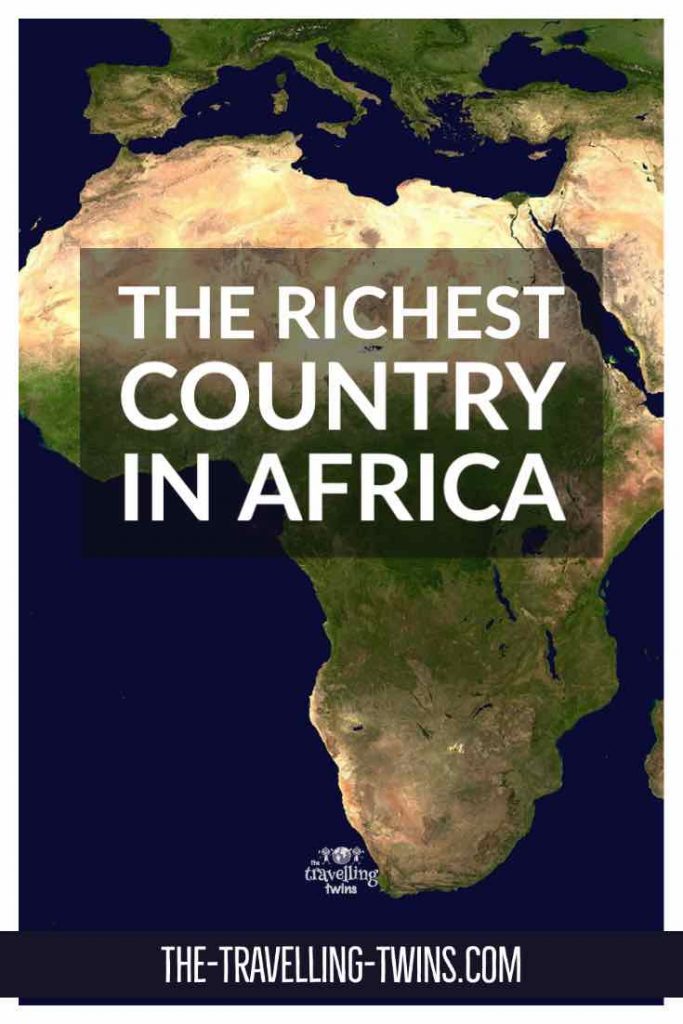
When it comes to providing the highest quality of holidays, there is one indicator that can help understand which countries offer high-quality holiday experiences – the GDP per capita.
The Richest Countries in Africa by Gross Domestic Product
| Country name | GPD in 2020 | |
| 1 | Egypt | 1,292.48 billion $ |
| 2 | Nigeria | 1,044.29 billion $ |
| 3 | South Africa | 710.773 billion $ |
| EAC | 602.584 billion $ | |
| 4 | Algeria | 488.291 billion $ |
| 5 | Morocco | 273.55 billion $ |
| 6 | Ethiopia | 272.017 billion $ |
| 7 | Kenya | 243.137 billion $ |
| 8 | Libya | 228.173 billion $ |
| 9 | Angola | 222.459 billion $ |
| 10 | Sudan | 188.84 billion $ |
| 11 | Ghana | 175.639 billion $ |
| 12 | Tanzania | 165.339 billion $ |
| 13 | Côte d’Ivoire | 144.497 billion $ |
| 14 | Tunisia | 131.087 billion $ |
| 15 | Uganda | 123.653 billion $ |
| 16 | Cameroon | 100.604 billion $ |
| 17 | Democratic Republic of the Congo | 83.151 billion $ |
| 18 | Zambia | 75.857 billion $ |
| 19 | Senegal | 66.438 billion $ |
| 20 | Madagascar | 53.409 billion $ |
- Strange and Interesting Facts About Iceland

- Vietnam Facts
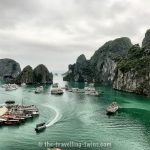
- Interesting Facts about Italy
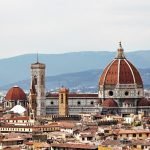
- 49 Fascinating Facts about Greece

Egypt | 1,292.478 billion USA
With a population of more than 100 million, Egypt is the richest country in Africa and among the top 50 richest in the world. This ancient state in the north of Africa has held this spot for many years despite its economy suffering severely leading to exchange reserves tumbling in the aftermath of the 2011 revolution during the Arab uprising.
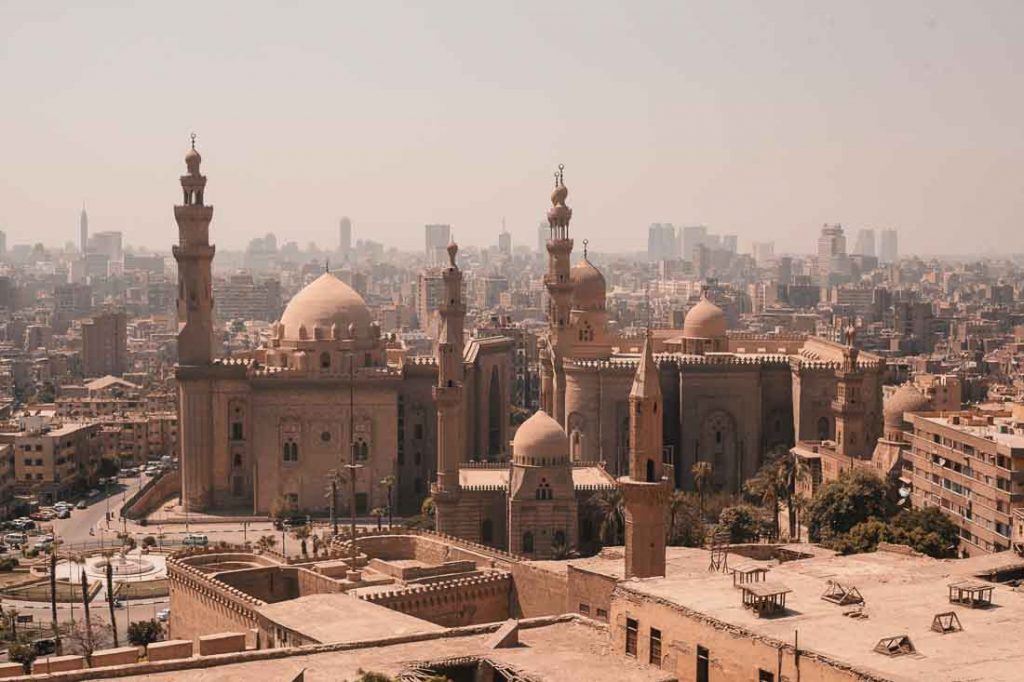
But today, the economic activities of Egypt have improved significantly to boost its economic growth.
The country’s leading economic factors include petroleum and natural gas exports as well as wholesale and retail trade, tourism, real estate, and construction. Egypt has recently shifted its reliance on raw material exports and invested heavily in its infrastructure in a bid to boost its tourism especially on its northern coast. Couple that with its historic landmarks and amazing heritage, Egypt has everything to make it a major tourist destination.
In terms of ecology, Egypt is a land of paradox – one side is endless desert while the other is bountiful River Nile, which supplies more than 97% of all renewable water resources in the country.
Nigeria | 1,044.291 billion USA
Nigeria, located in West Africa is the second-largest economy in Africa with a GDP per capita of $1,044.291. The country is home to more than 200 million people, which makes it one of the most highly populated nations in the world.
Its GDP is driven by tourism, finance, transport, and a large quantity of crude oil. Speaking of oil, Nigeria records approximately 1.6 million barrels of crude oil per day, making it the largest exporter of the commodity in Africa. Petroleum products account for 10% of the country’s total GDP and more than 80% of its export sector revenue.
Nigeria also has an abundance of natural resources and raw materials, which contribute significantly to its wealth. They include limestone, coal, tin, zinc, lead, natural gas, iron ore, and niobium. The country also has sufficient fertile agricultural land, which contributes to more than 20% of the country’s GDP. In terms of agriculture, Nigeria is also an important producer of rubber and cocoa.
But the drilling of crude oil has threatened the country’s natural landmarks and heritage, prompting the authorities to formulate policies to protect them, from oil refineries and processing plants.
In terms of attractions, Nigeria is home to Lekki Conservation Area, which boasts the longest canopy bridge in the world.
South Africa | 710.773 billion
Located on the southernmost edge of the continent, and hence its name, South Africa is the third richest African country. With advanced infrastructure, a highly developed and stable economy, and a GDP of more than $350 billion, South Africa is not only one of the wealthiest African countries but among the fastest-developing countries in the world.

Unlike most countries featured on this list, South Africa does not rely on only a single source of earning. That is because it boasts a good mix of manufacturing, mining, tourism, and financial services. Moreover, it is also home to an abundance of raw materials and natural resources such as diamonds, gold, iron ore, platinum, and coal. For many years, South Africa has been among the leading exporters of these commodities, especially platinum and gold.
Though the country has massive potential, political and global tumult has prevented it from reaching its full ability. In recent years, the country has experienced a recession after having consecutive quarters of inverse GDP growth rates.
Algeria | 488.291 billion
Found in the north of Africa, Algeria the fourth richest economy in Africa is the largest country on the continent. With a GDP of over $170 billion and a strong economy and advanced infrastructure, the country accomplished a notable feat when it reduced poverty by 20% in just 20 years.
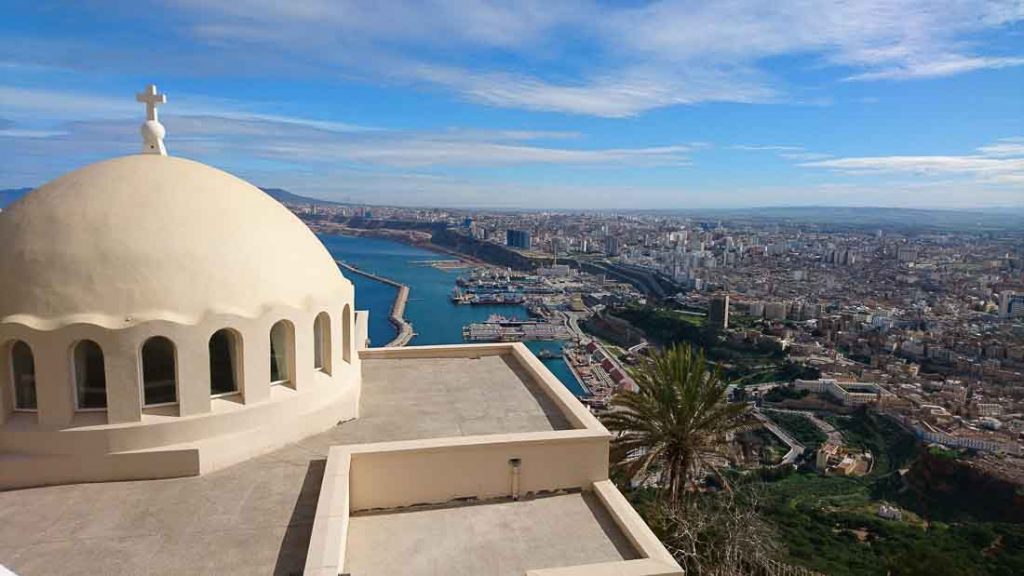
Algeria is an exporter of petroleum products and has abundant reserves of crude oil, which its economy relies on heavily. Natural gas and oil make up 70% of the country’s revenue. Recently the country discovered more crude oil wells, which have boosted its rapidly growing sector and putting it on the map as one of the leading oil producers in the globe.
But Algeria does not depend solely on crude oil; other sectors that contribute to its economy include industrial works, agriculture, commercial services, real estate, and construction. It is also a major exporter of ammonia in the continent.
Its capital Algiers is its core tourism center.
Morocco | 273.550 billion
Coming at number five is Morocco, the continent’s hub for spices. With a steady GDP of nearly $120 billion, Morocco is among the fastest-growing economies in Africa and the world. It was loved by fashion icons and artists such as Paloma Picasso and Yves Saint Laurent, the latter’s ashes were scattered in a botanical garden in Marrakesh.
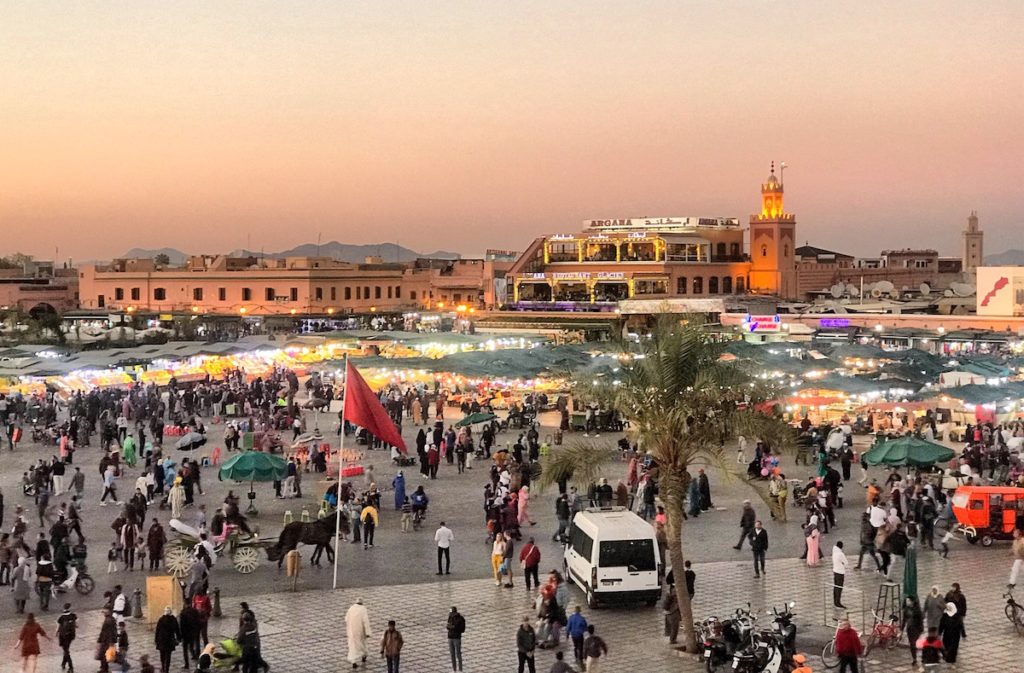
The country’s economy is predominantly based on manufacturing and mining. Almost 30% of its GDP revenue comes from industry, 55% comes from services, and 15% comes from agriculture. Additionally, its tourism sector is rapidly growing and is one of the top visited countries in Africa.
Morocco is the third-largest supplier of phosphorous in the world – facts about Morocco. This is sufficiently supplemented by its diversified exports including vehicles, motor vehicle parts, and electrical equipment as well as growing textile and telecom industries.
Marrakesh is one of the most visited cities in the region and its desert tour is one of the best things in Morocco. The city’s Jama El f’na Market is also a major tourist hotspot in the country loved by both locals and tourists, its one of the best places to try traditional Moroccan food.
Ethiopia | 272.017 billion
Situated in the horn of Africa, this landlocked country is divided by the famous Great Rift Valley, along which there are countless archaeological sites that date back to more than 3 million years ago. Ethiopia has a rich history and is known to be the birthplace of the coffee bean, also the highest producer of coffee in Africa.
Other products that contribute to its economy include honey, legumes, cut flowers, and oily seeds.
Its GDP constitutes construction, agriculture, food processing, tourism, manufacturing, energy, and resources. Agriculture is by far the country’s most promising sector, contributing to more than 40% of its GDP, 60% of the country’s exports, and over 80% of its total employment.
For the last ten years, Ethiopia’s economic growth has averaged 9.9% per year, a feat that very few countries in the continent have managed. Two years ago, the government launched an economic reform to open up its economy further and boost transformation.
Kenya | 243.137 billion
Located in East Africa, Kenya is well-known for its wildlife and breathtaking landscaped. With a GDP of approximately $100 billion, it is the 7th richest country in Africa. Kenya is currently experiencing stable living conditions and at 6.9pc the country is expected to register the strongest economic growth in Sub-Saharan Africa in 2021.
The Kenyan economy does not rely on oil like most countries in the continent, though it has discovered an abundance of oil reserves in its northern regions as well as along the Indian Ocean. Established itself as a major tea and coffee producer in the region, its agricultural industry is the most developed in central and southeast Africa.
Its coastline has also been an important gateway to the interior countries such as Uganda, Ethiopia, South Sudan, and even DRC Congo. It is also a major link between Asia and other landlocked countries in the region.
The industrial sector makes up approximately 50% of Kenya’s GDP, while the agricultural industry contributes up to 35%.
Kenya is also a leading tourist destination in Africa with its Diani Beach receiving a number of accolades including the First Choice Gold Choice Award, TripAdvisor 2012 Traveler’s Choice, and other recognitions.
Libya | 228.173 billion
With a comparatively small population of slightly 6.5 million, Libya is doing OK in terms of economic growth despite the turmoil it faced in the turn of the last decade that culminated in the death of its long-serving leader Muammar Gadhafi and a deep economic recession.
Nevertheless, it seems that the country has picked itself up and slowly returning to normal. Libya’s economy relies largely on its oil reserves and petroleum, which contribute more than 80% of its total GDP, with the rest coming from construction and service sectors.
Even with its current signs of better times, there no denying that the political crisis the country has faced since 2011 has massively set it a few years if not decades, back.
At some point, Libya was the fifth richest country in Africa and was modeled after the likes of Singapore and Taiwan.
The capital and largest capital is Tripoli, where most of its population resides.
Angola | 222.459 billion
Angola is one of the richest countries in southwestern Africa. It is home to one of the largest reserves of raw materials in the region, though unfortunately it is not properly used to benefits its citizens. Internal corruption and mismanagement of these resources have impacted Angola’s economic growth negatively.
The country’s economy depends on oil and petroleum, with large reserves of oil and natural gas, contributing to more than a third of its total GDP. Be that as it may, Angola also enjoys steady stability in other sectors that contribute significantly to its overall GDP, including hydroelectric power, agriculture, and mining.
This may help cushion the impacts of the drop in the oil process and the global slowdown brought about by the coronavirus. However, the country’s economy is still expected to remain in recession in the meantime.
Unfortunately, Angola is also ranked among the top ten most corrupt countries in Africa.
Sudan | 188.840 billion
Just like most countries in this list, Sudan also relies dominantly on oil and gas to fuel its economy, though more than a third of its total GDP is contributed by the agricultural sector. Peanuts and cotton are the main agricultural exports from Sudan.
Sudan has had a modern irrigated agriculture sector in recent decades, with about 800,000 hectares in as recent as 2010.
But despite boasting a diverse economy, which made it one of the fastest-growing economies in Africa in the past, Sudan’s GDP growth has been slowing down in recent years. In 2014, it saw its growth slow by 3.7 percent, which fell by another 3.1 percent the following year.
In 2016, there were positive projections that the country’s economy would gradually recover, however, its GDP dropped significantly between 2017 and 2018, and the following year it was estimated that it would fall by 2.4% due to a slow-growth in the service industry and real estate investment.
Sudan’s economy is expected to shrink even further in 2021, by 0.8% due to political unrest, the pandemic, unenthusiastic domestic demand, and weak private sector investment.
Ghana | 175.639 billion
Ghana is located in West Africa along the Gulf of Guinea and the Atlantic Ocean. It has a pretty rich and diverse economy that makes it one of the richest countries in Africa. Ghana is known for being the first state in Sub-Saharan Africa to attain independence and during its early days in the 1960s to 1980s, it was on course to be the largest economy in Africa. It was also the first country to half its poverty levels.
For many years, Ghana has been a haven for foreign investors due to its location and generally positive business atmosphere, and in the last few years, it has experienced a growth of 6%.
The country’s economy is made up of 50% of services, which employ more than 30% of the total workforce. Industry comes second with a 25% contribution to the GDP followed by agriculture. Additionally, the country is also home to an abundance of raw materials and natural resources, which complement the country’s export basket.
Petroleum is also available in Ghana, though not in large-scale as its regional counterparts including Nigeria.
Tanzania | 165.339 billion
Located south of East Africa, Tanzania is the second-largest economy in the region after Kenya. Its economy is largely dependent on agriculture, which accounts for almost half of the country’s total workforce.
Known for the majestic Kilimanjaro and many national parks, Tanzanian is a dominantly low-middle mixed-income economy.
Though the country has vast natural resources and materials, more than 30% of its citizens live in poverty, which is alarming for a country this relatively rich.
The Tanzanian economy has been transforming from a command economy to a market economy for a while now. But even with policies and reforms, its GDP per capita had been dropping, and only went beyond pre-transition in 2007.
Agriculture, as mentioned above is the major contributor to the country’s GDP, making up 25% while industries, which comprise mining, construction, manufacturing, natural gas, electricity, and water supply, contribute about 30% to the GDP.
The medium-term projection appears to be positive thanks to the large-scale spending on infrastructure.
Cote d’Ivoire | 144.497 billion
With a population of slightly over 25 million, Cote D’Ivoire (Ivory Coast) is comparatively a large country. Its economy is stable and growing in the aftermath of political turmoil. The country is predominantly a market-based economy and relies heavily on agriculture, with more than 70% of its population engaging in some form of agricultural practices.
By the standard of a developing country, Ivory Coast has a pretty incredible infrastructure, which has led to an 8.8% growth rate in recent years.
Based on the projections, the growth rate of Ivory Cost is expected to stand at 9% since its economic future is considered auspicious and bright.
Ivory Coast is the leading exporter of cashew and cocoa in the world and it is one of the most vibrant economies not only in the West African region but Africa.
The country also exports oil and has a large manufacturing industry. Ivory Coast has shown a healthy GDP growth rate recently, which made it the largest economy in the West African Economic and Monetary Union.
Tunisia | 131.087 billion
Tunisia is a North African country with a population of about 12 million. The country’s economy is extremely diverse and market-based with significant reliance on manufacturing, mining, and tourism.
The main contributors to its nominal GDP include petroleum, and mining of iron ore, phosphates, lead, barite, zinc, and salt.
However, Tunisia is one of the few countries in Africa that has placed a strong emphasis on tourism as its major export. Currently, the country is a leading beach holiday destination in North Africa, thanks to its close proximity to Europe.
Tunisia has also been able to massively develop its urban areas, with Tunis, Sousse, and Sfax among the leading tourist destinations in the country.
In terms of macroeconomic performance, the country’s real GDP growth decreased in 2019 to 1.5% following two years of rebounds.
Generally, continuing economic inequalities are hindering the social climate as well as impeding local and foreign investment and growth.
Uganda | 123.653 billion
Heading into the general election in the same period that the world has been shut down by the pandemic; Uganda has experienced difficulties in economic growth compared to its EAC counterparts Kenya and Tanzania.
Before that, Uganda saw the poverty rate reduced to 22.2% in 2013 with estimated GDP growth of 5.2 percent. In 2016, it recorded a real GDP growth of 4.6% and a nominal GDP of 11.6 percent.
This was attributed to the stringent fiscal discipline as well as proper management of the nation’s natural resources and raw materials by the government. Despite the challenges in 2020, its GDP growth remained robust and it’s propelled by the significant growth in higher agricultural output, services, tourism, and investment in infrastructure for oil production.
Soon, Uganda will join oil-driven economies as it proved crude oil reserves of more than 6.5 barrels, 2.2 billion of which is recoverable.
Cameroon | 100.604 billion
Located in Central Africa, Cameroon is a lower-middle-income country that relies on agricultural, mining, and petroleum and gas sectors to sustain its economy. Cameroon is one of the most troubled nations in Africa, thanks to its perennial tribal clashes with a life-president who rarely visits and rules from Belgium while his country burns.
Despite the security challenges, the country’s economy has been stable in the last two years thanks to a diverse tertiary sector and high growth in consumption and domestic and foreign investment.
However, this promising economic growth has not been as inclusive as it should be to enhance human capital. The country has continued to underachieve in terms of human development and is ranked 151 worldwide and 21 in Africa on the Human Development Index of 2018.
Projections for 2021 are positive though, and the country’s economy is expected to recover from 2020 contraction. Also expected to strengthen are the domestic and foreign demand, however, the balance of risks is skewed to the downside with the world still under lockdown.
The Democratic Republic of the Congo | 83.151 billion
In terms of natural resources, DRC is probably the richest country in the world, but in terms of economic growth, it is one of the poorest worldwide and relatively rich in Africa. With a massive population of 81 million people, the country was the second richest in Africa in the 1960s after South Africa but internal wars sponsored by Western countries, corruption, and political instability have hugely derailed its growth.
DRC has massive natural resources that most of which are still undiscovered. It has limitless freshwater, sweeping rainforest, vast, rich fertile soil under which there are abundant deposits of minerals such as diamonds, copper, gold, uranium, cobalt, oil, and coltan. All these resources are enough to make DRC Congo one of the richest countries on the planet, yet it doesn’t even crack the top 100.
According to a reliable report, the mineral wealth of DRC Congo is approximately $24 trillion, which is equivalent to the combined GDP of Europe and the United States.
Kinshasa is the country’s capital and is home to more than 14 million people, making it one of the largest metropolises in the world. Kinshasa is located just across the river from Brazzaville, the capital of the second Congo (Congo Brazzaville), making them the closest capital cities in the world.
It takes just five minutes to fly from Kinshasa to Brazzaville.
Zambia | 75.857 billion
Zambia has been enjoying significant socio-economic growth. However, things took a tumble in recent years. Its economic performance suffered, with its GDP dropping from averaging 6.8 percent annual growth between 2000 and 2014 to just 3.1 percent in the period between 2105 and 2019. This was caused by a sudden drop in the country’s agricultural output since the year 2013.
It is evident that agriculture is the main contributor to Zambia’s GDP, though copper accounts for up to 70% of total revenue from exports. However, a sharp decline in copper prices due to the depressed commodity market and decline in hydro-electric power generation has massively affected the country’s economic growth.
Also, corruption and political instability have slowed down the country’s economic growth. Projections also indicate that Zambia’s economy is expected to decrease even further in 2021.
Senegal | 66.438 billion
This West African country had one of the highest economic growths in Africa between 2014 and 2018 with an annual increase of 6%. In 209, Senegal’s GDP contracted to 5.3%.
Services are the main contributors to its GDP growth, and on-demand side, exports, and investments were the highest growth drivers.
Senegal relies heavily on the agricultural sector, just like many countries in Africa. Its agricultural sector is one of the biggest growths in West Africa.
Last year and pretty much 2021, the economic outlook of Senegal is quite hazy, but the pandemic has affected almost every country in the world. Nevertheless, the county is expected to recover gradually in the future.
Madagascar | 53.409 billion
Located off the coast of East Africa in the Indian Ocean, Madagascar is one of the largest islands in the world. In 2020, the country’s economy returned to moderately free after nearly three years of mostly unfree.
Its economic freedom score is 60.5, which makes it the 99th freest economy in the world in the 2020 Index and one of the highest in the Sub-Saharan region.
The government of Madagascar aims to ensure it maintains economic growth by enforcing structural reform policies that will boost investment capacity as well as reduce the fiscal risks of water and electricity utilities.
For many years, the country has been rocked by political violence, military coups, and corruption, so it is great to see that it has turned a corner.
The 20 Richest African Countries – Pin it

